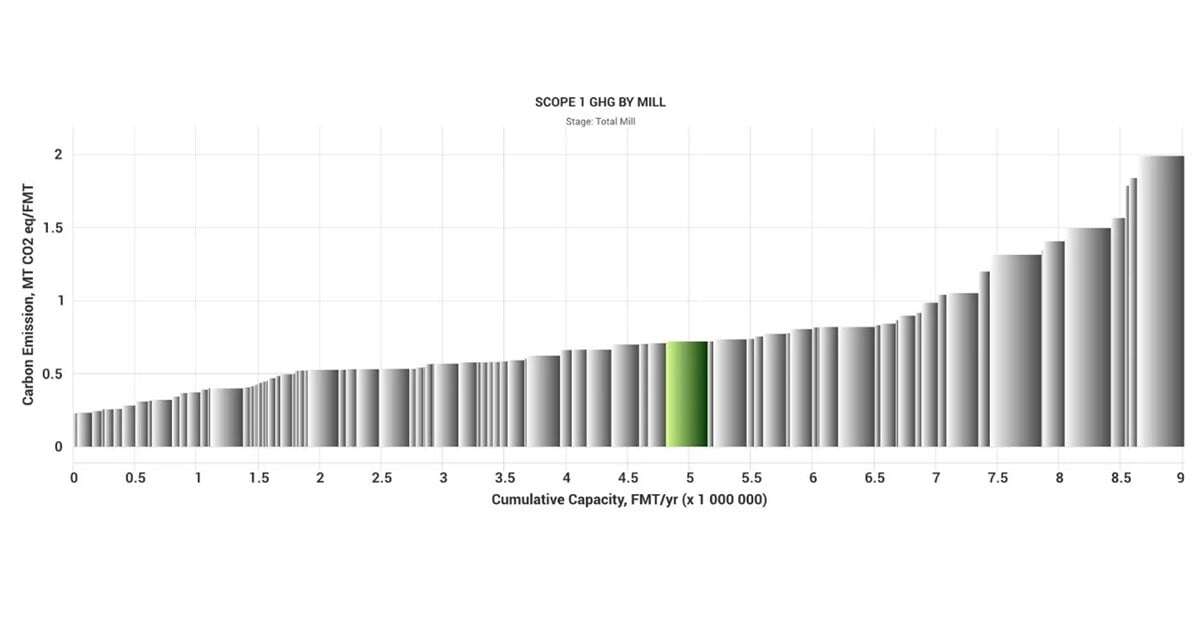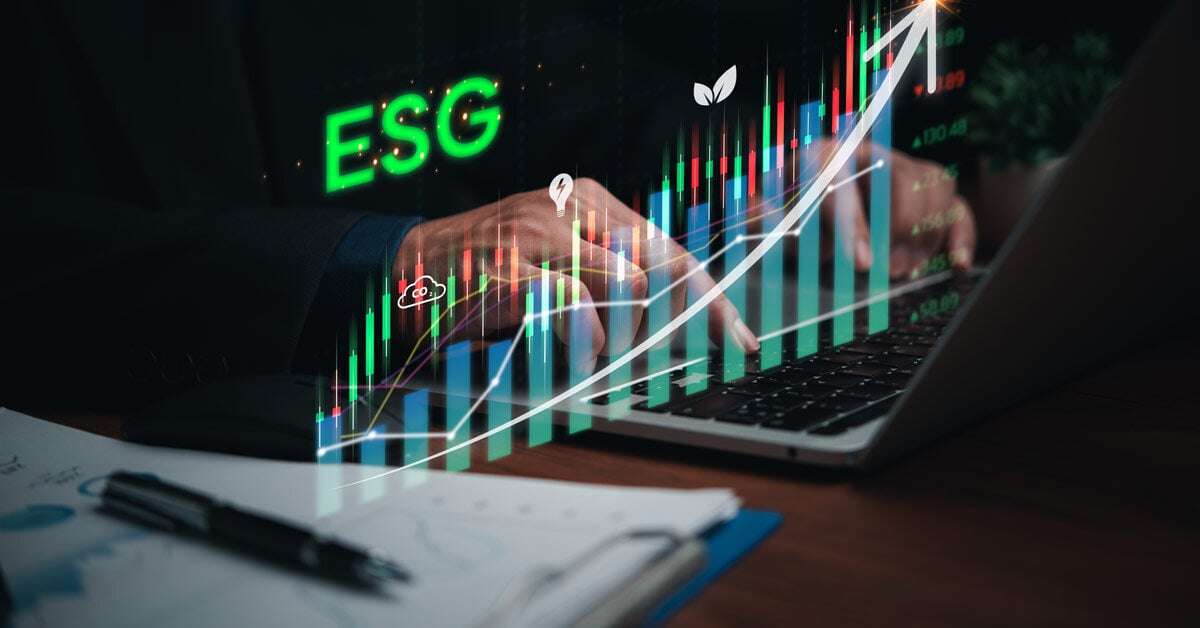4 min read
Optimizing Decarbonization: Strategies for Pulp and Paper Mills
ResourceWise
:
Sep 25, 2023 12:00:00 AM

The pursuit of decarbonization has swiftly transformed from a back-burner concern to a paramount global priority. New regulations and agendas, on both a corporate and government level, reflect the global recognition of the need to address climate change.
This shift is driven by the realization that the choices we make today will reverberate across generations, highlighting the inextricable link between decarbonization efforts and the sustainability of our planet. We are seeing an ever-growing, tangible pathway towards a more secure and greener future.
Let’s take a look at what’s in place and the impact it will have on decision-makers.
Policies and Initiatives to Combat Decarbonization
- European Union Deforestation-Free Supply Chain Regulation (EUDR) – The EUDR reflects a clear and direct initiative to restrict deforestation and degradation from both global forestry and agriculture. The EUDR sets new mandatory reporting requirements for business operators in the EU involved with certain commodities. Reporting involves keeping track of the value chain of these commodities to prevent the use of materials stemming from deforestation or forest degradation. Read more about EUDR requirements.
- Sustainable Flight Fund – The Sustainable Flight Fund is a unique investment in Sustainable Aviation Fuel (SAF). Starting with more than $100 million in investments from United and its partners, the fund will support start-ups working on SAF research, production, and technology. SAF is an alternative to normal jet fuel with reduced lifecycle GHG emissions. It’s made from used cooking oil and agricultural waste. Read more at www.united.com.
- Inflation Reduction Act – In 2022, President Biden signed the Inflation Reduction Act into law, marking the most significant action Congress has taken on clean energy and climate change in the nation’s history. The Inflation Reduction Act incentives reduce renewable energy costs for organizations – businesses, nonprofits, educational institutions, etc. Read more in the Inflation Reduction Act Guidebook.
- European Green Deal – The European Green Deal is a package of policy initiatives, all of which aim to set the EUP on the path to a green transition. The ultimate goal is to reach carbon neutrality by 2050. The package includes initiatives covering the climate, the environment, energy, transport, industry, agriculture, and sustainable finance. Read more from the Council of the European Union.
Companies Working Towards Decarbonization
- JetBlue and Shell Aviation – JetBlue and Shell Aviation have joined forces to introduce an additional supply of sustainable aviation fuel (SAF) to the Los Angeles International Airport (LAX). The collaboration aims to begin delivery in the first half of 2023, with JetBlue set to receive 10,000,000 gallons of blended SAF at LAX over the next two years. In the third year, the airline will also have the option to purchase an additional 5,000,000 gallons of SAF, either at LAX or other airports within JetBlue's network. This partnership marks a significant step towards the airline's commitment to reducing its carbon footprint and promoting greener aviation practices. Read the announcement.
- Honeywell and ExxonMobil – In an exciting development, Honeywell has recently announced its collaboration with ExxonMobil to deploy one of its cutting-edge carbon capture technologies. This innovative solution will be integrated into Exxon's low-carbon hydrogen production facility in Baytown, Texas, and is expected to have a significant impact on carbon dioxide emissions. Honeywell's CO2 Fractionation and Hydrogen Purification System will enable ExxonMobil to capture an impressive 7 million tons of carbon dioxide annually. To put this into perspective, this is equivalent to the emissions produced by 1.5 million automobiles in a year. Read more at www.hydrogenfuelnews.com
- Companies Signed onto the Climate Pledge – Launched in 2020, Climate Pledge is an Amazon-backed initiative that asks firms to commit to achieving net-zero emissions by 2040. As of 2022, more than 300 businesses across 51 industries and 29 countries committed to joining the pledge. Among the signees include the world’s largest container shipping company Maersk; the leading enterprise software developer SAP; the North American timberland company Weyerhaeuser; tech behemoth HP; corporate giant Procter & Gamble, and cloud-computing titan Salesforce. Read more at www.aboutamazon.com.
Identifying Your Competitive Position
For pulp and paper producers, tracking greenhouse gas emissions is of the utmost importance. As discussed, we are in an era where environmental consciousness and sustainability are at the forefront of global concerns.
Producing pulp and paper involves energy-intensive processes. Between pulp extraction, chemical treatments, and drying, a significant portion of the steps involved contribute to significant carbon emissions.
As the world strives to mitigate climate change and transition to a low-carbon economy, diligent GHG emission tracking in the pulp and paper industry is crucial. By tracking these emissions, producers gain insight into the specific stages and processes that contribute most to their carbon output.
Without this sort of information, there’s no way to identify areas where improvements can be made. Efforts like optimized energy efficiency and cleaner production methods will enhance the environmental performance of the industry as a whole. These steps also position producers as responsible stewards of the planet. Taking the lead in such matters will bolster public perception, reputation, and market competitiveness.
Additionally, producers within the pulp and paper industry need to acquire accurate GHG tracking to make sure they are aligned with regulatory requirements and international commitments. With a growing number of regions establishing emission reduction targets in line with global agreements, failure to do so could result in penalties, reputational damage, and hindered access to markets that prioritize sustainable practices.
But how can producers achieve this?
Critical Tools You Need in Your Harness
FisherSolve
The pulp and paper industry's adherence to GHG emission tracking is pivotal in addressing climate change and complying with regulations. By adopting comprehensive tracking methodologies, producers can minimize their carbon footprint and play an active role in the global pursuit of a more sustainable future.
FisherSolve’s Carbon Module provides players in the pulp and paper industry the exact starting point they need to formulate a plan regarding decarbonization. With information on carbon emissions of various scopes, all the way from cradle to destination, users can measure and benchmark the carbon footprint of all its mills in comparison to its competitors.

Unlike many other carbon benchmarking modules, with FisherSolve, you can compare Scope 1, 2, and 3 emissions and analyze a breakdown of your emissions spent by carbon class as well.

ESG Was Important Long Before It Became a Buzzword
Prima CarbonZero
Once you have determined your position and identified the areas of your business that require attention, insights from our Prima CarbonZero platform can be utilized to gain a deeper understanding of the cost of low-carbon inputs necessary for decarbonizing your business operations.
Prima CarbonZero specializes in pricing carbon and low-carbon fuel markets, offering invaluable knowledge for grasping the green carbon value proposition of pulp and paper mills. Furthermore, the platform provides mills with a comprehensive understanding of the potential value and opportunities in their green carbon product streams. Mills should leverage Prima's expertise to explore how these residual streams can be transformed into future fuels and maximize returns as policies drive the demand for low-carbon fuels into high gear.
Mapping a Path to Decarbonization: A Comprehensive Business Planning Guide






